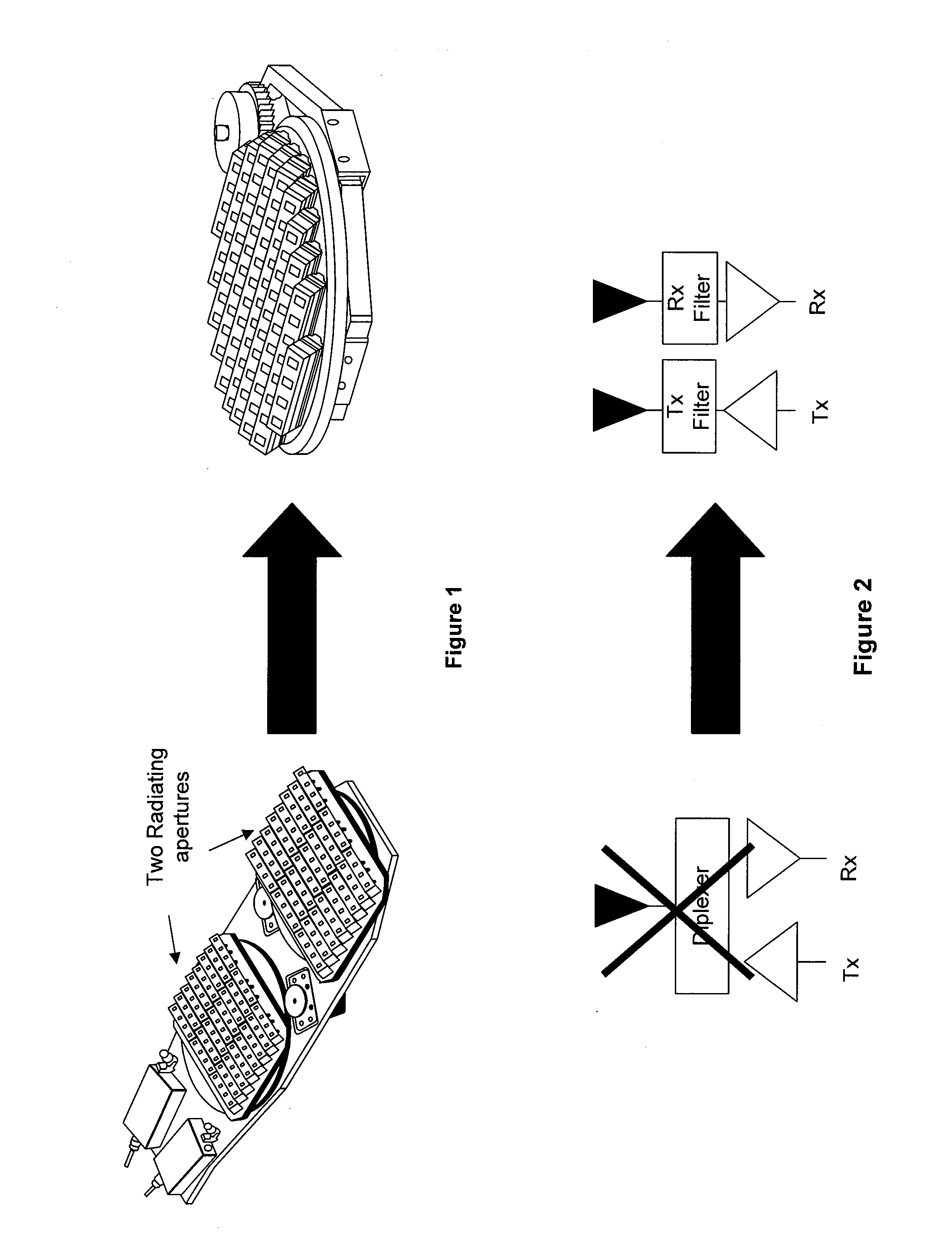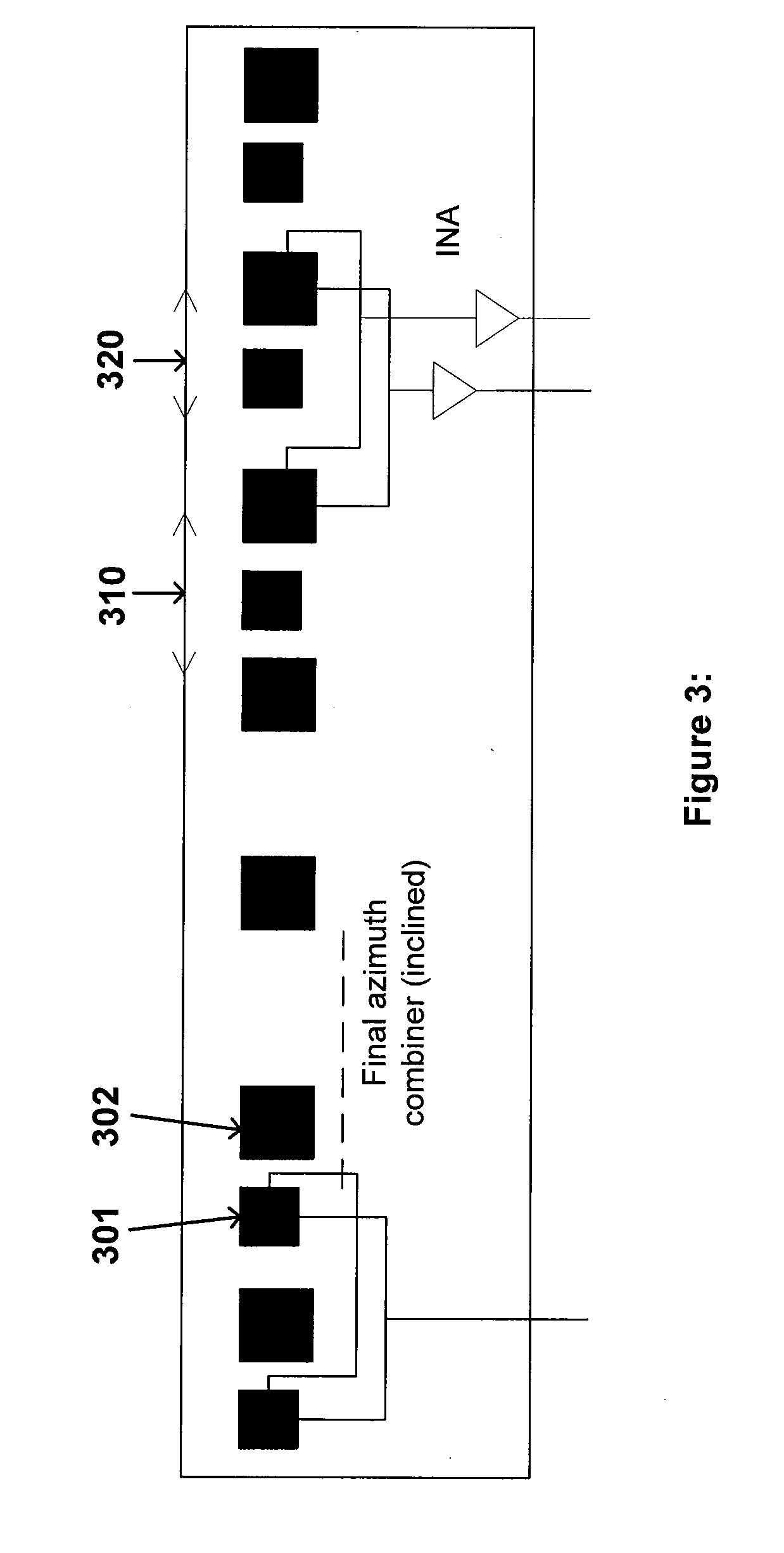Hybrid single aperture inclined antenna
a single aperture, inclined antenna technology, applied in the direction of antennas, electrically short antennas, antenna details, etc., can solve the problems of high coupling between elements affecting the quality of the radiation of the antenna, the difficulty of designing antenna arrays using the same aperture for both uplink and downlink functions, and the increase in costs and integration issues. , to achieve the effect of reducing back radiation, minimizing coupling, and different effects on the performance of the antenna
- Summary
- Abstract
- Description
- Claims
- Application Information
AI Technical Summary
Benefits of technology
Problems solved by technology
Method used
Image
Examples
Embodiment Construction
[0039]While exemplary embodiments are described herein in sufficient detail to enable those skilled in the art to practice the invention, it should be understood that other embodiments may be realized and that logical material, electrical, and mechanical changes may be made without departing from the spirit and scope of the invention. Thus, the following detailed description is presented for purposes of illustration only.
[0040]As illustrated in FIG. 1, an exemplary embodiment of an antenna array configuration integrates radiating elements, active components, and beam-forming networks of receive and transmit apertures in a single aperture. Furthermore, in an exemplary embodiment, the single aperture has equivalent size of one of prior art dual apertures, and still maintains the performance level of the dual aperture antenna.
[0041]In a typical antenna, a transmit radiating element and a receive radiating element are coupled to a diplexer to form a combined transmit and receive chain. ...
PUM
 Login to View More
Login to View More Abstract
Description
Claims
Application Information
 Login to View More
Login to View More - R&D
- Intellectual Property
- Life Sciences
- Materials
- Tech Scout
- Unparalleled Data Quality
- Higher Quality Content
- 60% Fewer Hallucinations
Browse by: Latest US Patents, China's latest patents, Technical Efficacy Thesaurus, Application Domain, Technology Topic, Popular Technical Reports.
© 2025 PatSnap. All rights reserved.Legal|Privacy policy|Modern Slavery Act Transparency Statement|Sitemap|About US| Contact US: help@patsnap.com



